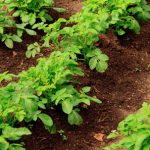Weekly Column – March 4th 2017
Purple Sprouting Broccoli Time
If the fact that we’ve put February behind us wasn’t reason enough to be cheerful, along comes March and purple sprouting broccoli time. I love this vegetable, not least because it provides some wonderful greens for the kitchen at a time when we’re just about tiring of the root crops like carrots and parsnips and other veg like beetroot and celeriac have disappeared altogether.
Purple sprouting broccoli (let’s get on first name terms and call it PSB) is an amazing vegetable to eat but it’s also somewhat of a veg-growing oddity. It bucks the ‘sow in spring, harvest in autumn’ convention and instead spends almost a full year in the ground, surviving all but the toughest of winters and becoming ‘sow in summer, harvest in spring’. This makes it supremely useful for the home-grower because it means it’s providing food in the difficult hungry gap months of March and April. This early arrival brings it in ahead of pretty much everything else in the veg patch – it will be May before early peas, potatoes and even salad greens make much of an appearance.
Unlike regular broccoli (properly known as calabrese), which puts all its efforts in to producing one big, densely-packed and dare I say tasteless, central head, PSB is an altogether more gradual and delicate affair. The part we eat are actually the flowering shoots, and happily, the more we harvest the more it produces. Let’s just say we will be eating lots of it in the next two months. That will also be a great tonic for our sluggish post-winter bodies.
From a taste perspective, the home-grower has all the advantages when it comes to PSB. Like most vegetables, PSB is at its best when eaten almost immediately after picking and before the sugars turn to less palatable starch. Cooked immediately after harvesting, its flavour is absolutely exquisite and it needs just a few minutes of gentle steaming or boiling. Generally speaking we will have it as a side veg, but we will also put it centre stage with the gratin recipe below, or indeed as a starter, dipping the shoots in to a tangy dressing (tahini is a great base for a PSB dressing, as are anchovies).
If you are buying PSB, seek out local and recently-picked. Try a local farmer’s market or good quality supermarket. Don’t bother with the cellophane-wrapped ‘fresh’-from-Kenya alternative. The flavor will disappoint.
The Basics – Growing PSB
Sow in early to mid summer in module trays (one seed per module). 3 or 4 plants should be enough for most households. Plant out as part of your brassica rotation about 6 weeks after sowing when the seedlings are hardy, allowing at least 60cm between plants.
Though it’s relatively easy to grow, it is vulnerable to all the normal pests that enjoy all brassicas. Netting or fleece over the plant will keep butterflies from laying their eggs on the plants (which will turn to leaf-munching caterpillars). Pigeons also like to eat the leaves. Earthing up in the winter will help keep the plants from toppling over.
Harvesting PSB is about snapping off the shoots before they flower when about 10cm long. Keep picking to encourage a longer season.




